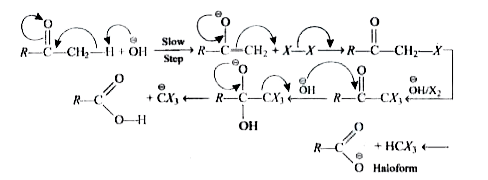Solve that following equations: tanθ+tan2θ+tan3θ=tanθtan2θtan3θ
To solve the equation tanθ+tan2θ+tan3θ=tanθtan2θtan3θ, we can follow these steps:
Step 1: Rearranging the equation
We start with the original equation:
tanθ+tan2θ+tan3θ=tanθtan2θtan3θ
We can rearrange this to group the terms:
tanθ+tan3θ=tanθtan2θtan3θ−tan2θ
Step 2: Factoring out tan2θ
Next, we can factor out tan2θ from the right-hand side:
tanθ+tan3θ=tan2θ(tanθtan3θ−1)
Step 3: Using the tangent addition formula
We recognize that the left-hand side can be expressed using the tangent addition formula:
tan(A+B)=tanA+tanB1−tanAtanB
Here, let A=θ and B=3θ:
tan(θ+3θ)=tan(4θ)=tanθ+tan3θ1−tanθtan3θ
Thus, we can rewrite our equation as:
tan4θ=−tan2θ
Step 4: Using the property of tangent
We know that:
tan(−θ)=−tan(θ)
So we can rewrite the equation:
tan4θ=tan(−2θ)
Step 5: Setting up the general solution
Since the tangents are equal, we can set up the equation:
4θ=−2θ+nπ(n∈Z)
Solving for θ:
4θ+2θ=nπ
6θ=nπ
θ=nπ6
Final Solution
Thus, the solutions to the equation are:
θ=nπ6,n∈Z
We start with the original equation:
tanθ+tan2θ+tan3θ=tanθtan2θtan3θ
We can rearrange this to group the terms:
tanθ+tan3θ=tanθtan2θtan3θ−tan2θ
Next, we can factor out tan2θ from the right-hand side:
tanθ+tan3θ=tan2θ(tanθtan3θ−1)
We recognize that the left-hand side can be expressed using the tangent addition formula:
tan(A+B)=tanA+tanB1−tanAtanB
Here, let A=θ and B=3θ:
tan(θ+3θ)=tan(4θ)=tanθ+tan3θ1−tanθtan3θ
Thus, we can rewrite our equation as:
tan4θ=−tan2θ
We know that:
tan(−θ)=−tan(θ)
So we can rewrite the equation:
tan4θ=tan(−2θ)
Since the tangents are equal, we can set up the equation:
4θ=−2θ+nπ(n∈Z)
Solving for θ:
4θ+2θ=nπ
6θ=nπ
θ=nπ6
Thus, the solutions to the equation are:
θ=nπ6,n∈Z
Topper's Solved these Questions
Similar Questions
Knowledge Check
Compound having −O∣∣C−CH3 group reacts rapidly with halogen in presence of a base to form haloform. The reaction is known as haloform.
R−O∣∣C−CH3X2+ϴOH−−−−→R−O∣∣C−ϴO+CHX3
Mechanism

Consider the following reactions:
Reaction I →Ph−O∣∣C−CH3Cl2,ϴOH−−−−→Ph−O∣∣C−ϴO+CHCl3
Reaction II →Ph−O∣∣C−CD3−Cl2,ϴOH−−−−→Ph−O∣∣C−ϴO+CDCl3
Which of the following is correct comparison of the rate of reaction I and II?ArI>rIIBrI>rIICrI=rIIDCannot be determined
Solve for θ for the equation 4cot2θ=cot2θ−tan2θ.
View Solutiontanθ.sin2θ=
View SolutionFind the values of θ in the interval (−π2,π2) satisfying the equation (1−tanθ)(1+tanθ)sec2θ+2tan2θ=0
View SolutionWhich of the following is not the mechanism of Cannizzaro reaction ?
2PhCHOΘOH−−→PhCH2OH+PhCOOΘ
View SolutionWhich of the following is not the mechanism of Cannizzaro reaction when the concentration of base is very high ?
2HCHOHigh conc.−−−−−→of baseHCOOΘ+CH3OΘ
View SolutionComplete the following reactions:
PhCHO+CH3NO2ΘOH−−→Δ(A)
View SolutionFind the value of θ in tanθ=sinθ
View Solution
